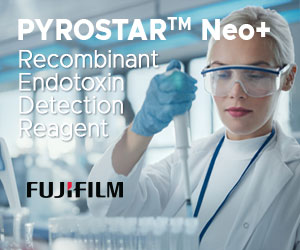Enteric Protozoa: DN...
How to Improve Pipet...
15th October 2012 Content supplied by: Azbil BioVigilant, Inc.
Compounding Pharmacy Benefits from Real Time Microbial Air Monitoring
Leiter Rx, one of the USA's foremost compounding pharmacies, will be using Azbil BioVigilant's IMD-A® 300-series systems for select cleanroom applications benefiting from real-time microbial air monitoring.
Leiter Rx, established in 1926, has built a reputation in quality process innovation fundamental to reducing risk of product contamination. Charles Leiter, recognized as one of the leading ophthalmic pharmacists in the country, said, "We have never been afraid to invest in technology that will improve our operations. Azbil BioVigilant's IMD-A system will be used to continuously monitor our cleanroom during syringe filling operations which will reduce the potential risk of product contamination. We also will utilize the system to promote the best aseptic techniques among our staff. It is a very versatile piece of equipment that keeps us on the cutting edge of quality process advancements."
When told of the decision, Aric Meares, CEO of Azbil BioVigilant, stated that this was another important milestone for the company. "Pharmaceutical compounding is an area of need where instantaneous microbial detection delivers great benefit. It is gratifying to see Leiter Rx among the first in compounding to utilize our technology platform across their cleanroom area." He added, "The Food and Drug Administration is actively encouraging drug makers to deploy advanced technologies such as the IMD-A system to realize both quality and drug delivery benefits."
Azbil BioVigilant's IMD-A systems detect the presence of microbes by simultaneously measuring the size and intrinsic fluorescence of every particle in an aerosol sample as it is drawn through the instrument and interrogated by a laser. Microbes possess certain organic auto-fluorescent compounds necessary for cellular function, including NADH, riboflavin, and DPA (in the case of endospores). When these intrinsic fluorophores are excited by laser, they auto-fluoresce and this signal is measured. The IMD-A uses this fluorescence measurement as a critical metric within its proprietary and deterministic algorithms to differentiate a particle of biological origin (e.g. a bacterium) from an inert (e.g. dust) particle.
Click here to watch youtube video showing how the IMD-A® rapid biologic detection system works.
Tags:
Date Published: 15th October 2012
Source article link: View
Related news
Enteric Protozoa: DNA Reference Materials
How to Improve Pipetting between




